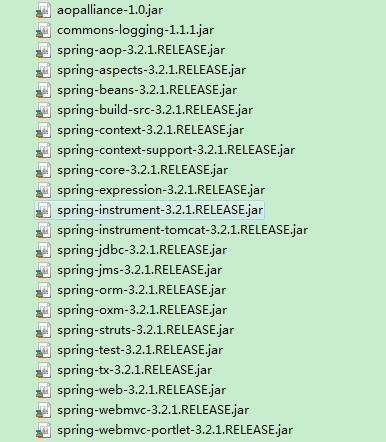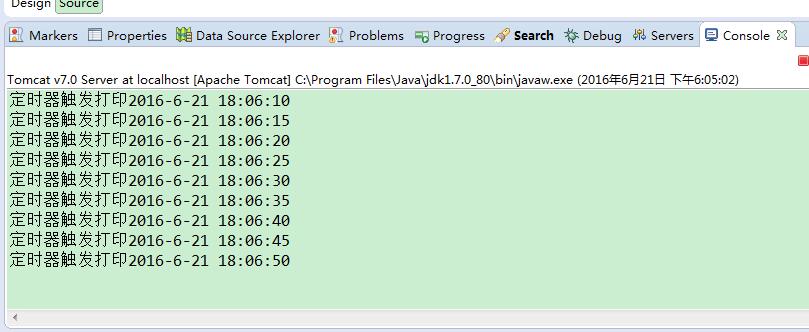
1. Présentez les packages jar liés au printemps :

2. Configurez Spring dans web.xml
<listener> <description>Spring监听器</description> <listener-class>org.springframework.web.context.ContextLoaderListener</listener-class> </listener> <context-param> <param-name>contextConfigLocation</param-name> <param-value>classpath:applicationContext.xml</param-value> </context-param>
. 3. Configurez l'écouteur dans applicationContext.xml
<?xml version="1.0" encoding="UTF-8"?>
<beans xmlns="http://www.springframework.org/schema/beans"
xmlns:xsi="http://www.w3.org/2001/XMLSchema-instance"
xmlns:context="http://www.springframework.org/schema/context"
xmlns:task="http://www.springframework.org/schema/task"
xsi:schemaLocation="http://www.springframework.org/schema/beans
http://www.springframework.org/schema/beans/spring-beans-3.0.xsd
http://www.springframework.org/schema/context
http://www.springframework.org/schema/context/spring-context-3.0.xsd
http://www.springframework.org/schema/task
http://www.springframework.org/schema/task/spring-task-3.0.xsd"
default-lazy-init="false">
<!-- 注解方式 -->
<context:annotation-config />
<context:component-scan base-package="com.test.task" />
<task:annotation-driven/>
<!-- XML方式 -->
<!-- <bean name="testTask" class="com.test.task.TestTask" lazy-init="false"></bean>
<task:scheduled-tasks>
<task:scheduled ref="testTask" method="print" cron="0/5 * * * * ?"/>
</task:scheduled-tasks> -->
</beans>4. Écrivez la classe d'entité
package com.test.task;
import java.text.DateFormat;
import java.util.Date;
import org.springframework.scheduling.annotation.Scheduled;
import org.springframework.stereotype.Component;
@Component
public class TestTask {
@Scheduled(cron = "*/5 * * * * ?")
public void print(){
String time = DateFormat.getDateTimeInstance().format(new Date());
System.out.println("定时器触发打印"+time);
}
}5. Répertoire du projet :
Résultats d'exploitation :

Ce qui précède est l'intégralité du contenu de cet article. J'espère qu'il sera utile à l'apprentissage de chacun, et j'espère également que tout le monde. prendra en charge le site Web PHP chinois.
Pour plus d'articles liés aux exemples d'implémentation de tâches planifiées au printemps, veuillez faire attention au site Web PHP chinois !
 Introduction aux commandes CLI
Introduction aux commandes CLI
 Logiciel d'évaluation de serveur
Logiciel d'évaluation de serveur
 Quelle est la différence entre ibatis et mybatis
Quelle est la différence entre ibatis et mybatis
 Comment activer la même fonction de ville sur Douyin
Comment activer la même fonction de ville sur Douyin
 Quels sont les systèmes de correction d'erreurs de noms de domaine ?
Quels sont les systèmes de correction d'erreurs de noms de domaine ?
 La différence entre l'API de repos et l'API
La différence entre l'API de repos et l'API
 Méthode de récupération de données informatiques Xiaomi
Méthode de récupération de données informatiques Xiaomi
 Que dois-je faire si la souris ne bouge plus ?
Que dois-je faire si la souris ne bouge plus ?
 Comment fermer le port 445 sous XP
Comment fermer le port 445 sous XP